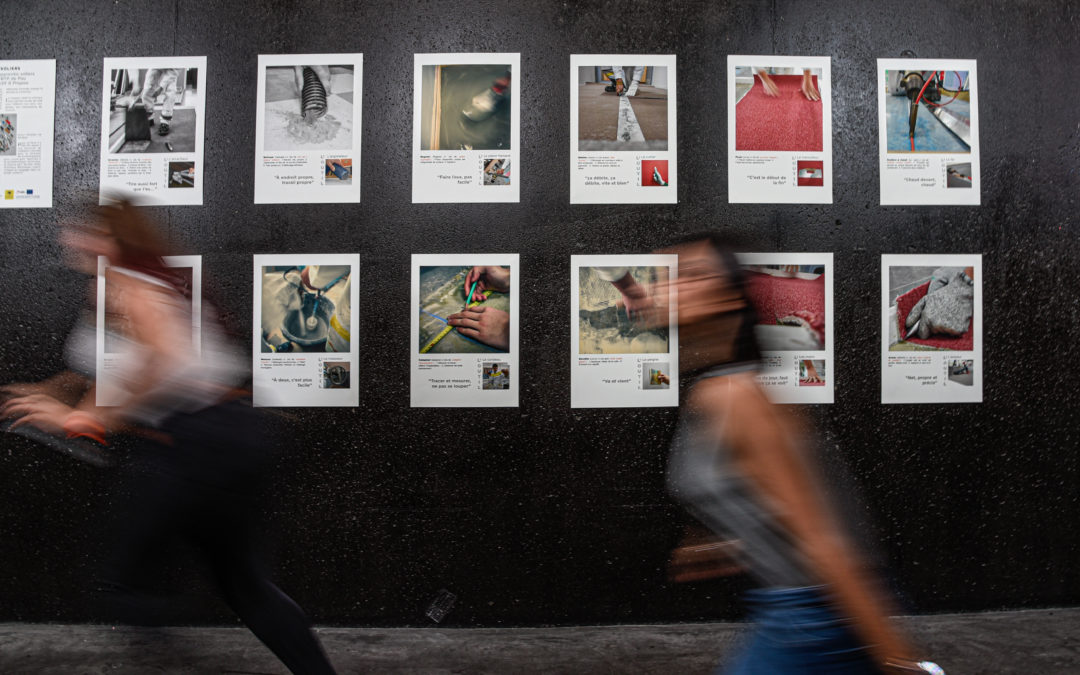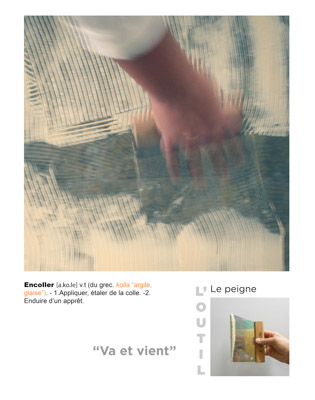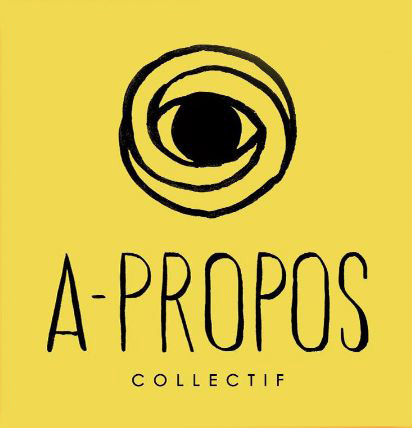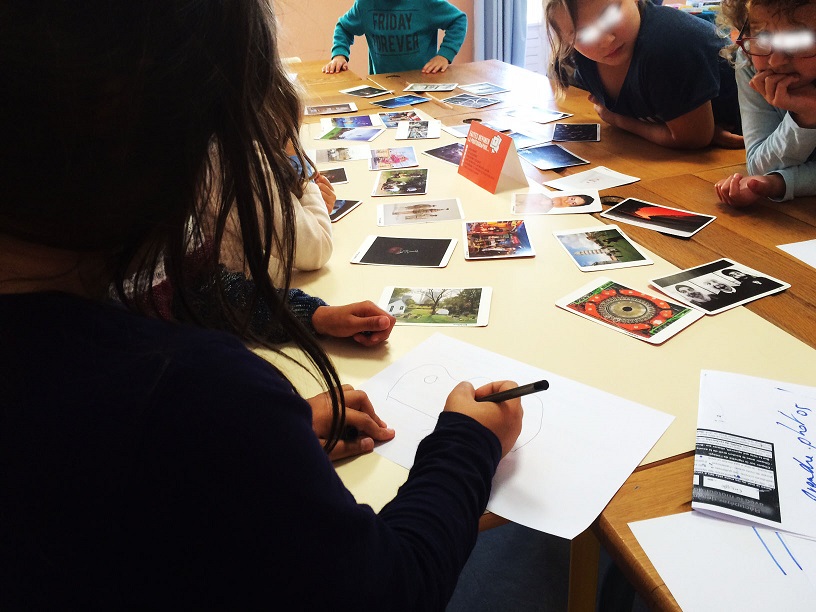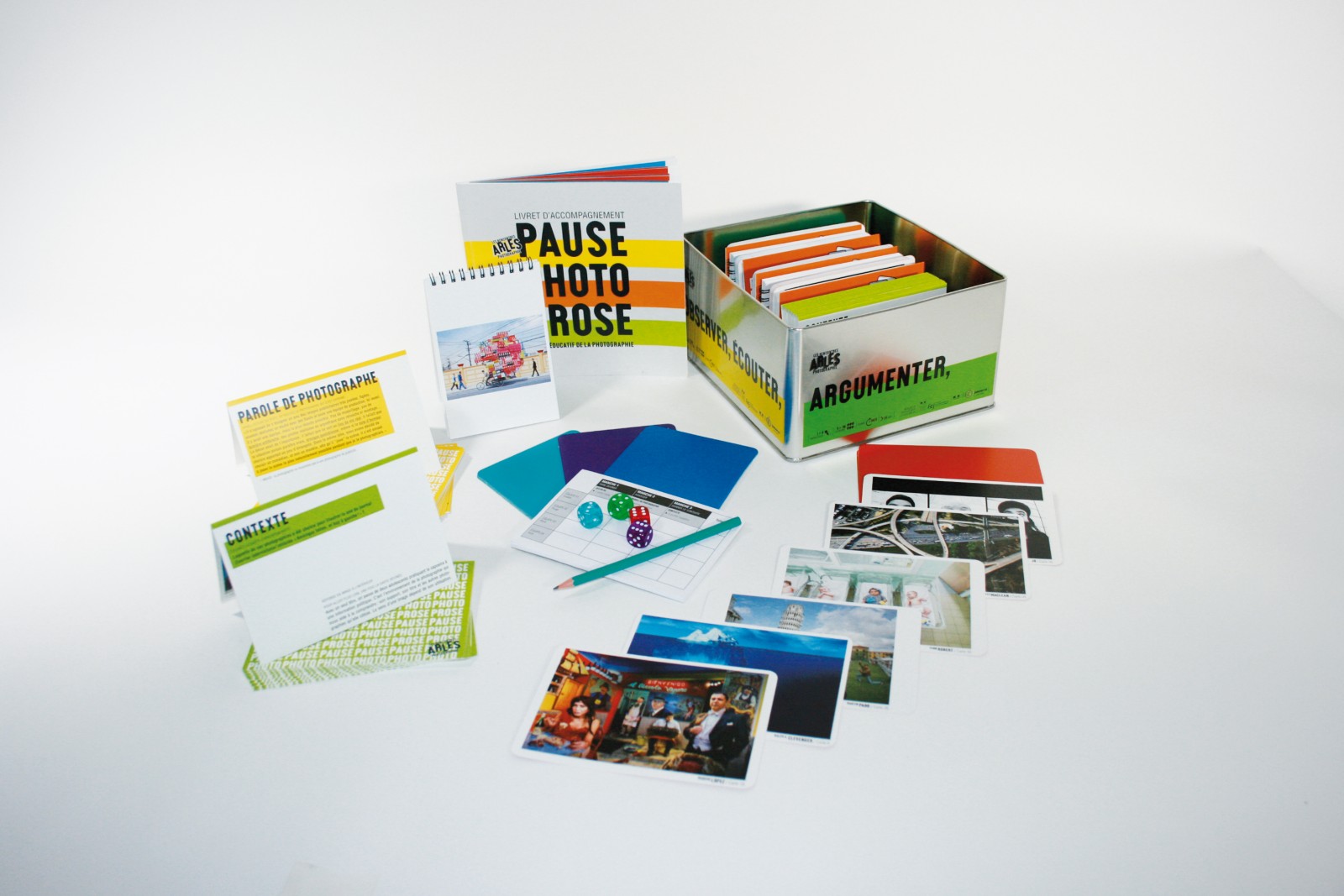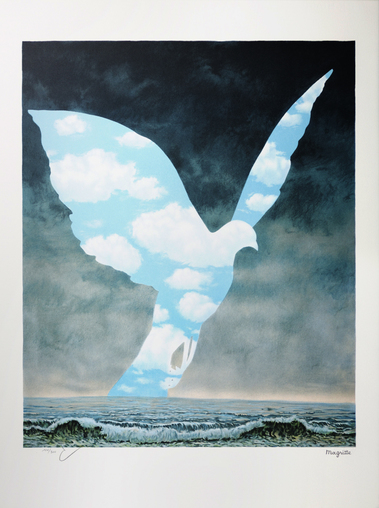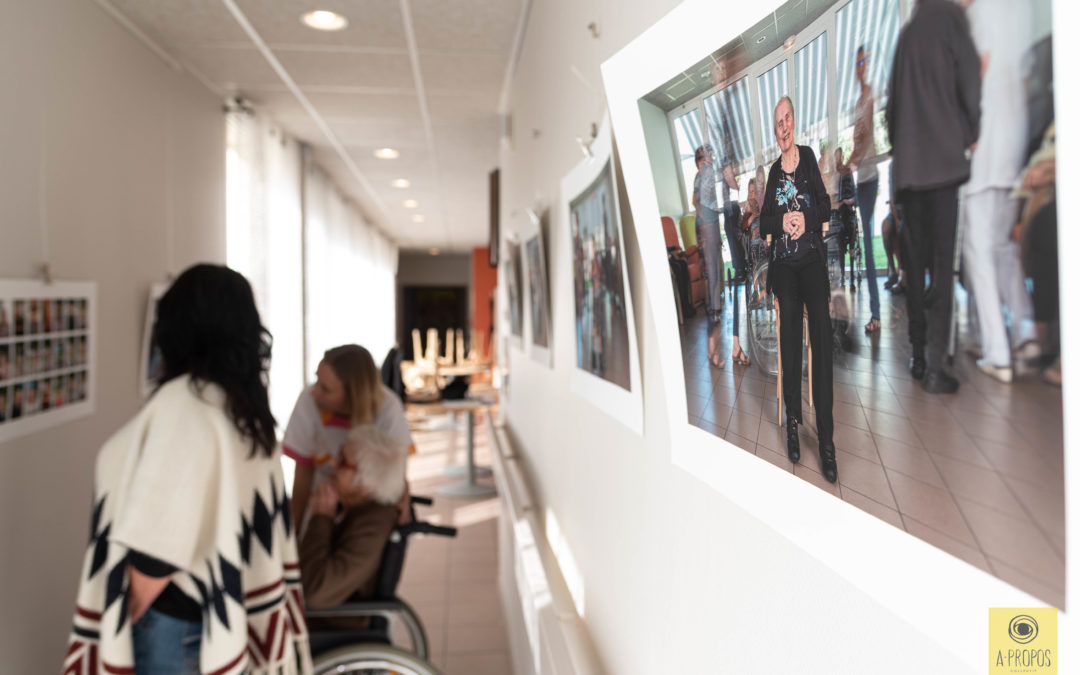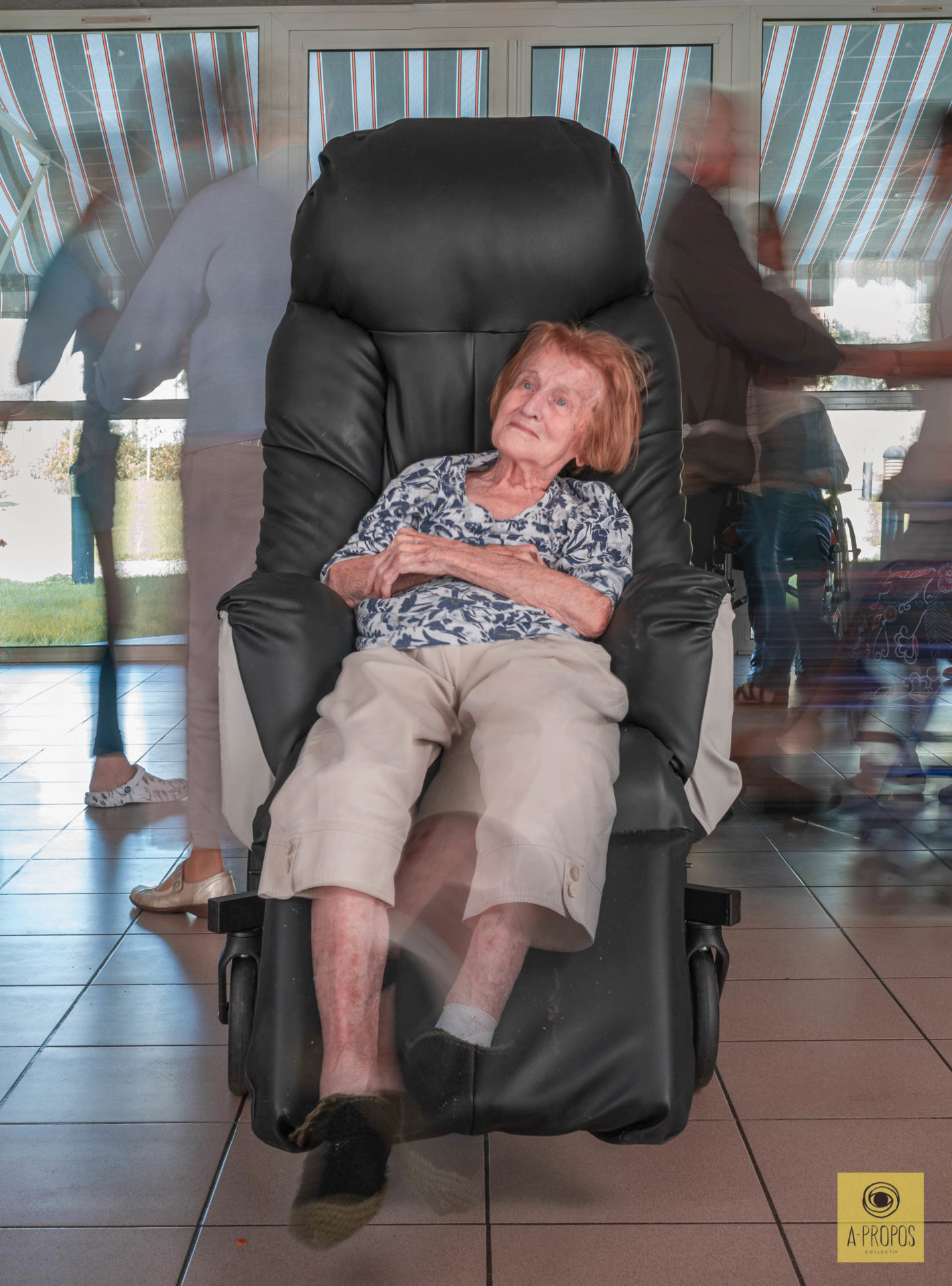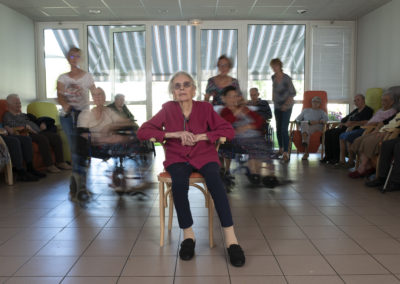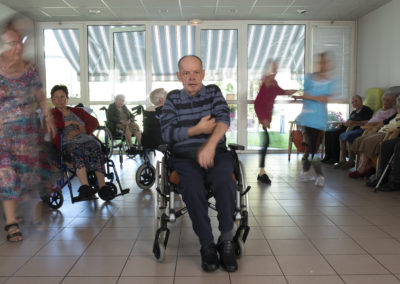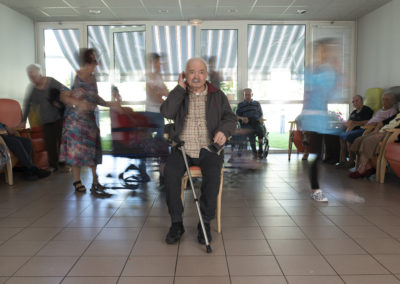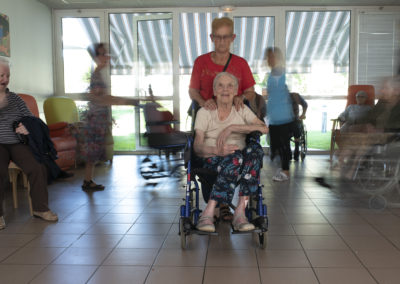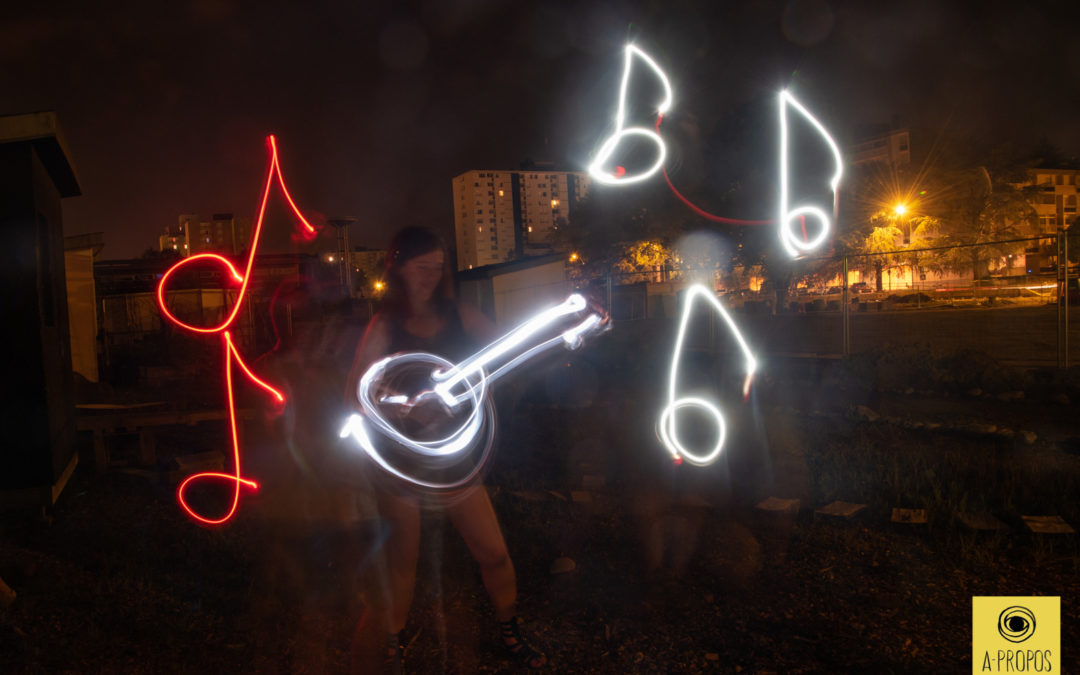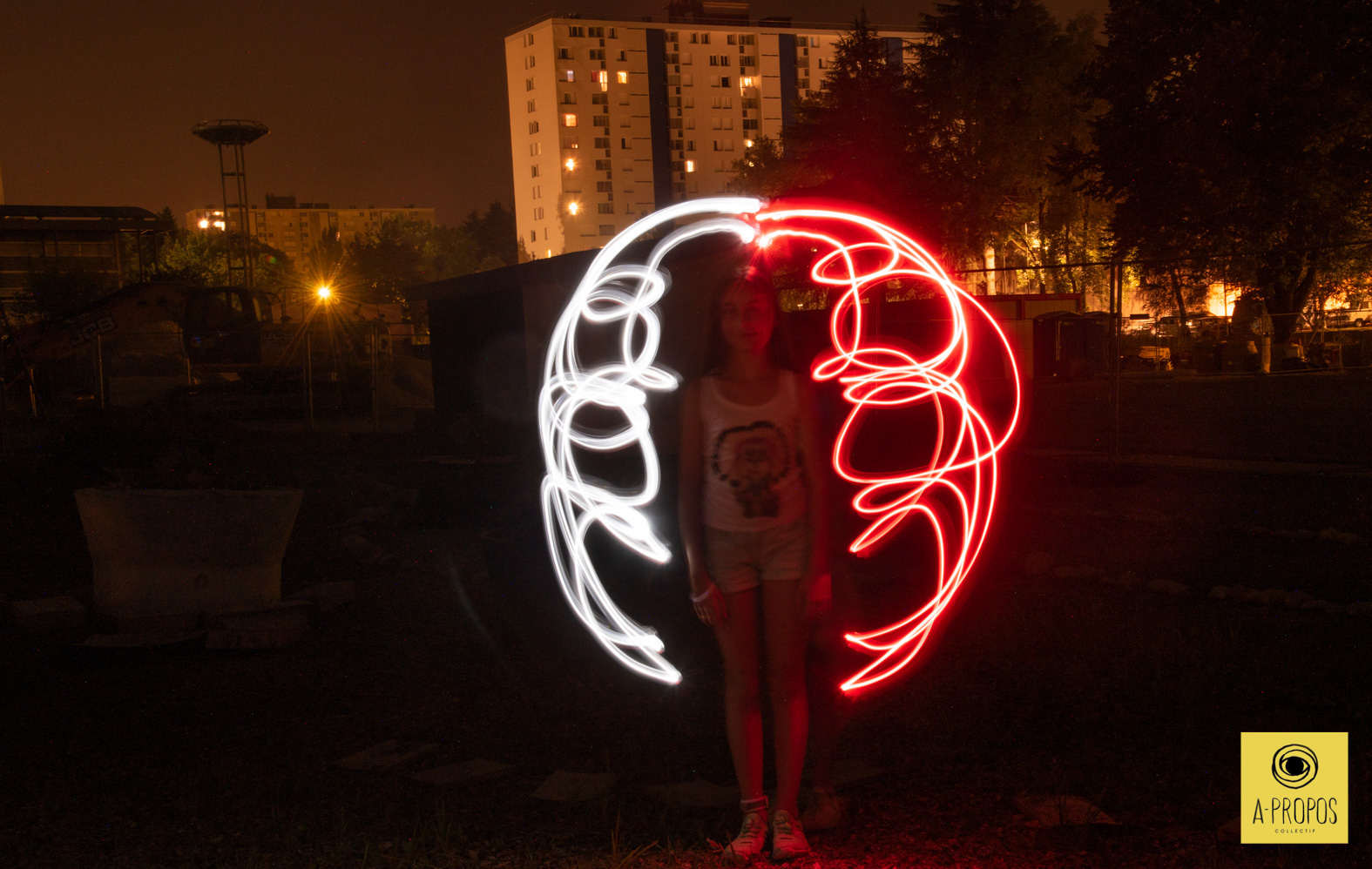Philippe Glorieux, an author-photographer from the collective A propos, redefines the art of portrait, and breaks with the illusions of resemblance, following Paul Klee saying/statement « art does not reproduce the visible, it makes visible ». Especially here, where the visible is disturbing to see.
For the photographer the priority is the way and not the end, so he put in place creative projects in order to bring happiness to the elderly or simply to spark their interest in living, to make them feel alive again. Seniors are mirrors to our own finitude.
Visiting: During the portrait sessions, the photographer made the EHPAD residents pose while the pictures were being projected on a big screen. He chose the motion-blur effect to show them in their social space, while still making them stand out from the blurry background. Their relatives, the staff, the co-residents, anybody in the background, thanks to a slow motion effect appear to be « ghosts ». They are surrounded by people but yet they feel more and more alone.
The portrait session was on a volunteer basis. In order to catch the attention of the residents, the photographer put a great importance to explaining his approach, the art of portrait, the timelessness of a picture , as well as its patrimonial value.
Role-play: The photographer used Pause Photo Prose play-cards, to recreate famous paintings but with photography. With its 32 cards, this game helped stimulate curiosity, emulation, attention and collective thinking. This game requires several qualities: quick observation, complicity, logic, knowledges, imagination, listening, and teamwork.
Create: the portraits are made with a remote control, the models can see the picture on a big screen. In the framework of the « Scène en tableaux » / picture a scene/ On stage/ workshop, the residents had to organise the setting and look for costumes and accessories in order to create a great role-play portrait.
